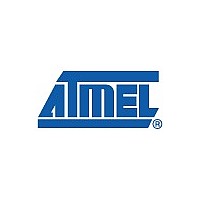ATmega3250A Atmel Corporation, ATmega3250A Datasheet - Page 290

ATmega3250A
Manufacturer Part Number
ATmega3250A
Description
Manufacturer
Atmel Corporation
Specifications of ATmega3250A
Flash (kbytes)
32 Kbytes
Pin Count
100
Max. Operating Frequency
20 MHz
Cpu
8-bit AVR
# Of Touch Channels
16
Hardware Qtouch Acquisition
No
Max I/o Pins
69
Ext Interrupts
25
Usb Speed
No
Usb Interface
No
Spi
2
Twi (i2c)
1
Uart
1
Graphic Lcd
No
Video Decoder
No
Camera Interface
No
Adc Channels
8
Adc Resolution (bits)
10
Adc Speed (ksps)
15
Analog Comparators
1
Resistive Touch Screen
No
Temp. Sensor
No
Crypto Engine
No
Sram (kbytes)
2
Eeprom (bytes)
1024
Self Program Memory
YES
Dram Memory
No
Nand Interface
No
Picopower
No
Temp. Range (deg C)
-40 to 85
I/o Supply Class
1.8 to 5.5
Operating Voltage (vcc)
1.8 to 5.5
Fpu
No
Mpu / Mmu
no / no
Timers
3
Output Compare Channels
4
Input Capture Channels
1
Pwm Channels
4
32khz Rtc
Yes
Calibrated Rc Oscillator
Yes
Available stocks
Company
Part Number
Manufacturer
Quantity
Price
- Current page: 290 of 679
- Download datasheet (37Mb)
ATmega165A/PA/325A/PA/3250A/PA/645A/P/6450A/P
A. Load Command “Write Flash”
1. Set XA1, XA0 to “10”. This enables command loading.
2. Set BS1 to “0”.
3. Set DATA to “0001 0000”. This is the command for Write Flash.
4. Give XTAL1 a positive pulse. This loads the command.
B. Load Address Low byte
1. Set XA1, XA0 to “00”. This enables address loading.
2. Set BS1 to “0”. This selects low address.
3. Set DATA = Address low byte (0x00 - 0xFF).
4. Give XTAL1 a positive pulse. This loads the address low byte.
C. Load Data Low Byte
1. Set XA1, XA0 to “01”. This enables data loading.
2. Set DATA = Data low byte (0x00 - 0xFF).
3. Give XTAL1 a positive pulse. This loads the data byte.
D. Load Data High Byte
1. Set BS1 to “1”. This selects high data byte.
2. Set XA1, XA0 to “01”. This enables data loading.
3. Set DATA = Data high byte (0x00 - 0xFF).
4. Give XTAL1 a positive pulse. This loads the data byte.
E. Latch Data
1. Set BS1 to “1”. This selects high data byte.
2. Give PAGEL a positive pulse. This latches the data bytes. (See
Figure 27-3
for signal
waveforms)
F. Repeat B through E until the entire buffer is filled or until all data within the page is loaded.
While the lower bits in the address are mapped to words within the page, the higher bits address
the pages within the FLASH. This is illustrated in
Figure 27-2 on page
291. Note that if less than
eight bits are required to address words in the page (pagesize < 256), the most significant bit(s)
in the address low byte are used to address the page when performing a Page Write.
G. Load Address High byte
1. Set XA1, XA0 to “00”. This enables address loading.
2. Set BS1 to “1”. This selects high address.
3. Set DATA = Address high byte (0x00 - 0xFF).
4. Give XTAL1 a positive pulse. This loads the address high byte.
290
8285D–AVR–06/11
Related parts for ATmega3250A
Image
Part Number
Description
Manufacturer
Datasheet
Request
R

Part Number:
Description:
INTERVAL AND WIPE/WASH WIPER CONTROL IC WITH DELAY
Manufacturer:
ATMEL Corporation
Datasheet:

Part Number:
Description:
Low-Voltage Voice-Switched IC for Hands-Free Operation
Manufacturer:
ATMEL Corporation
Datasheet:

Part Number:
Description:
MONOLITHIC INTEGRATED FEATUREPHONE CIRCUIT
Manufacturer:
ATMEL Corporation
Datasheet:

Part Number:
Description:
AM-FM Receiver IC U4255BM-M
Manufacturer:
ATMEL Corporation
Datasheet:

Part Number:
Description:
Monolithic Integrated Feature Phone Circuit
Manufacturer:
ATMEL Corporation
Datasheet:

Part Number:
Description:
Multistandard Video-IF and Quasi Parallel Sound Processing
Manufacturer:
ATMEL Corporation
Datasheet:

Part Number:
Description:
High-performance EE PLD
Manufacturer:
ATMEL Corporation
Datasheet:

Part Number:
Description:
8-bit Flash Microcontroller
Manufacturer:
ATMEL Corporation
Datasheet:

Part Number:
Description:
2-Wire Serial EEPROM
Manufacturer:
ATMEL Corporation
Datasheet:

Part Number:
Description:
U6046BREAR WINDOW HEATING TIMER / LONG-TERM TIMER
Manufacturer:
ATMEL Corporation
Datasheet:











